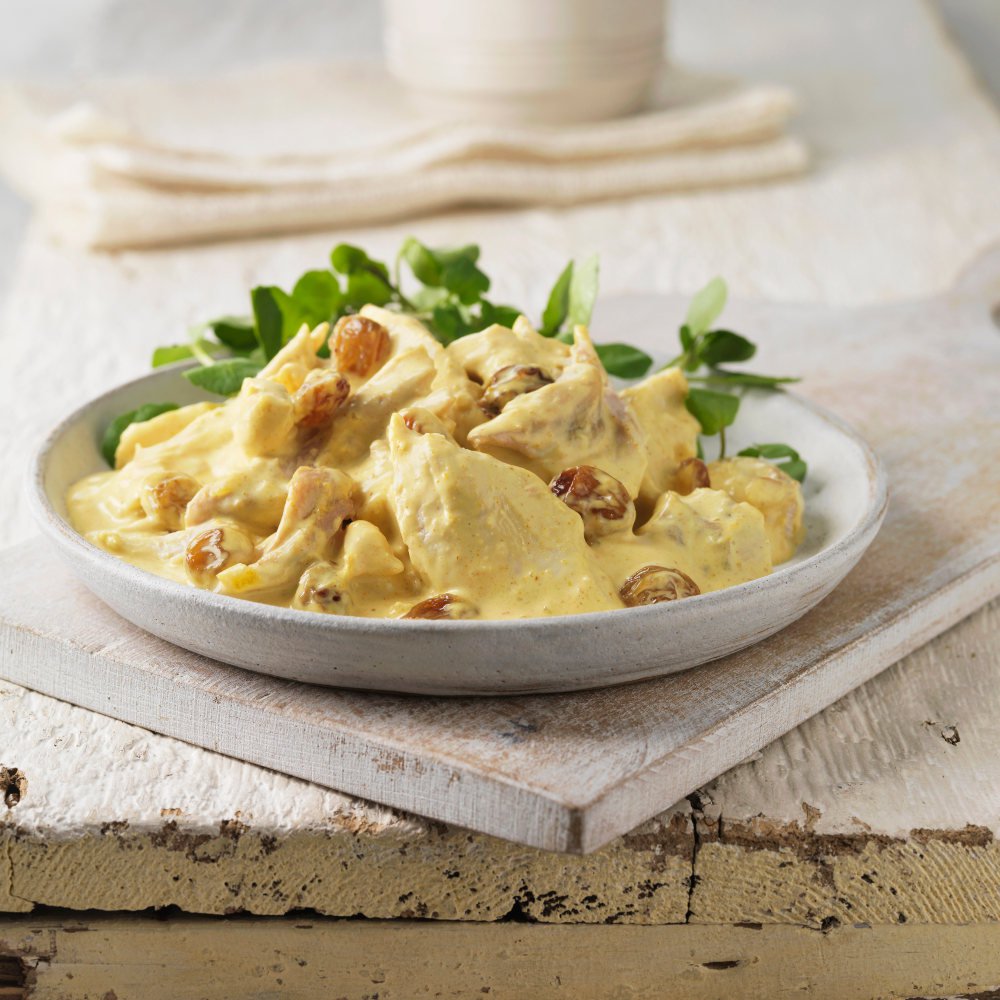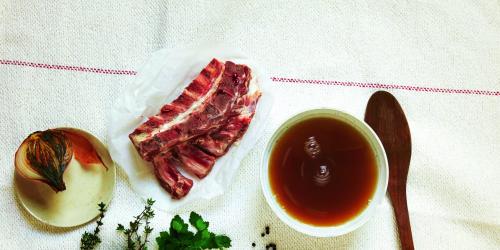The hen is a meat rich in protein
The chicken is a poultry which, like all meats and fish , is an important source of protein with about 22 g per 100 g of meat, most of which is in the skin.
The most interesting is that the chicken meat contains the nine essential amino acids (amino acids are small structures that, put end to end, are long molecular chains: proteins). The latter are extremely important since they participate in the development, maintenance and proper functioning of tissues and more particularly of muscles, skin, bones and organs. Not being made by the body, these essential amino acids must necessarily come from what we eat, the chicken being a source quite interesting. In particular, it contains (like the chicken egg ) lysine and methionine, which are rare in the rest of our diet.
The hen is a relatively low fat food
Compared to lamb or beef , the chicken has the advantage of being low in fat (however, it is fatter than veal or pork). About 50% of the lipids that constitute its fat are composed of monounsaturated and polyunsaturated fatty acids, which explains the relative suppleness of this fat. The fat is contiguous to the skin, the hen is very low caloric (very little fat) if it is consumed without skin.
The hen is not only a relatively low fat food, but it is also low in sodium (ie salt ) with only 70 mg per 100 g of meat.
Chicken provides many essential nutrients
The hen is not only a source of protein. Indeed, it also contains a large amount of phosphorus , zinc , selenium , B vitamins and iron .
Phosphorus is extremely important since it is the second most abundant mineral in the body (after calcium). It is involved in the development and health of teeth, bones and tissues and in the maintenance of blood pH.
Zinc is mostly present in the brown parts of the chicken, although it is also found in chicken breast. This mineral is essential for the proper functioning of the immune system, taste and balance of thyroid hormones, sexual and pancreatic (including insulin).
Selenium helps fight against free radicals that tend to damage cells and promote certain chronic and degenerative diseases.
Vitamin B2 (or riboflavin) is mostly present in brown chicken meat (although it is also found in white). It participates among other things in the production of energy, the restoration of cells and the manufacture of red blood cells (RBCs)
The vitamin B3 (or niacin) that the chicken contains, also participates in the production of energy, but also in the formation of DNA.
Vitamin B5 (pantothenic acid) is found in chicken and it optimizes the use of energy produced through food. It is also involved in the manufacture of steroid hormones and neurotransmitters that can convey nerve messages.
Vitamin B6 (pyridoxine) is essential for the metabolism of proteins and fatty acids. In addition, it is involved in the manufacture of neurotransmitters.
As for the iron, which is especially present, also, in the brown parts, it is essential inter alia to the transport of the oxygen in the blood. The iron present in the hen is one of the food irons best assimilated by the body (much more than those of plants).
The chicken is a poultry which, like all meats and fish , is an important source of protein with about 22 g per 100 g of meat, most of which is in the skin.
The most interesting is that the chicken meat contains the nine essential amino acids (amino acids are small structures that, put end to end, are long molecular chains: proteins). The latter are extremely important since they participate in the development, maintenance and proper functioning of tissues and more particularly of muscles, skin, bones and organs. Not being made by the body, these essential amino acids must necessarily come from what we eat, the chicken being a source quite interesting. In particular, it contains (like the chicken egg ) lysine and methionine, which are rare in the rest of our diet.
The hen is a relatively low fat food
Compared to lamb or beef , the chicken has the advantage of being low in fat (however, it is fatter than veal or pork). About 50% of the lipids that constitute its fat are composed of monounsaturated and polyunsaturated fatty acids, which explains the relative suppleness of this fat. The fat is contiguous to the skin, the hen is very low caloric (very little fat) if it is consumed without skin.
The hen is not only a relatively low fat food, but it is also low in sodium (ie salt ) with only 70 mg per 100 g of meat.
Chicken provides many essential nutrients
The hen is not only a source of protein. Indeed, it also contains a large amount of phosphorus , zinc , selenium , B vitamins and iron .
Phosphorus is extremely important since it is the second most abundant mineral in the body (after calcium). It is involved in the development and health of teeth, bones and tissues and in the maintenance of blood pH.
Zinc is mostly present in the brown parts of the chicken, although it is also found in chicken breast. This mineral is essential for the proper functioning of the immune system, taste and balance of thyroid hormones, sexual and pancreatic (including insulin).
Selenium helps fight against free radicals that tend to damage cells and promote certain chronic and degenerative diseases.
Vitamin B2 (or riboflavin) is mostly present in brown chicken meat (although it is also found in white). It participates among other things in the production of energy, the restoration of cells and the manufacture of red blood cells (RBCs)
The vitamin B3 (or niacin) that the chicken contains, also participates in the production of energy, but also in the formation of DNA.
Vitamin B5 (pantothenic acid) is found in chicken and it optimizes the use of energy produced through food. It is also involved in the manufacture of steroid hormones and neurotransmitters that can convey nerve messages.
Vitamin B6 (pyridoxine) is essential for the metabolism of proteins and fatty acids. In addition, it is involved in the manufacture of neurotransmitters.
As for the iron, which is especially present, also, in the brown parts, it is essential inter alia to the transport of the oxygen in the blood. The iron present in the hen is one of the food irons best assimilated by the body (much more than those of plants).


